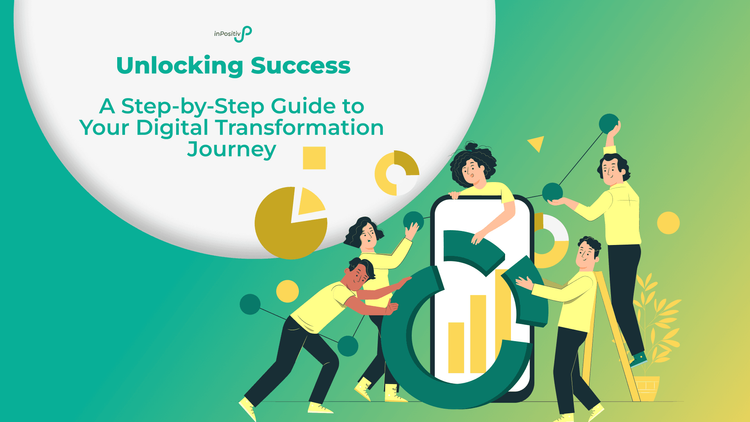What is Digital Agility?
Digital agility is the ability of a business to swiftly adapt to changes in the digital landscape. It involves the seamless integration of agility the capability to respond quickly and effectively to challenges and opportunities across all areas of the organisation with digital technologies and processes. In today’s fast-paced world, this combination is essential for staying competitive and meeting evolving customer expectations.
Agility, at its core, is about flexibility, speed, and the ability to pivot in response to change. It enables businesses to break free from rigid structures, allowing teams to innovate, collaborate, and make decisions quickly. When applied digitally, agility empowers organisations to rapidly implement new technologies, optimise operations, and respond to market disruptions with ease.
Embracing digital agility means fostering a culture of continuous improvement and readiness. This agility allows businesses to enhance customer experiences, streamline processes, and launch new products efficiently, ensuring they remain competitive and ready to seize new opportunities in a constantly changing market.
Core Components of Digital Agility
Digital agility relies on several key components that work together to help organisations adapt quickly and continuously improve. These components are:

-
Technology Integration: This means bringing in new tools and platforms that automate tasks, provide data insights, and support AI-driven decisions. For example, a company might use cloud-based software to streamline operations, making it easier for teams to react quickly to changes and keep business processes running smoothly.
-
Agile Practices: Agile practices, originally used in software development, involve breaking down work into small, manageable pieces and continuously refining them. In practice, this could mean teams working in short, focused cycles (called sprints) to deliver new features or products faster and more efficiently.
-
Data-Driven Decision Making: This involves using real-time data to guide decisions, ensuring that businesses make informed choices quickly. For instance, by analysing customer data, a company can identify new trends or needs and adjust its strategy on the fly, staying ahead of the competition.
-
Cultural Shift: Embracing digital agility requires a change in organisational culture. This means creating an environment where innovation is encouraged, and employees are free to try new ideas, even if they sometimes fail. In practice, it could look like teams regularly experimenting with new approaches, learning from mistakes, and quickly adapting to new challenges.
Together, these components create a framework that allows businesses to be flexible, responsive, and proactive in a rapidly changing digital landscape.
The Growing Importance of Digital Agility
Digital agility is about more than just adopting new technologies; it’s about creating an organisational culture that encourages swift decision making, seamless collaboration, and continuous improvement. For businesses in Switzerland, where the market is highly competitive and customer expectations are constantly evolving, achieving digital agility is essential to staying ahead.
Adapting to Market Changes
The digital world moves at an unprecedented pace, and market conditions can shift overnight. To thrive in such an environment, businesses must be able to adapt quickly to new opportunities and threats. Digital agility empowers companies to respond rapidly to these changes, allowing them to pivot their strategies, reallocate resources, and launch new products or services that meet emerging demands.
For example, when a company leverages digital agility, it can harness real-time data and analytics to make informed decisions, ensuring it remains competitive even in the face of disruption. This adaptability is crucial for navigating the digital vortex a term that describes the accelerating pace of change in the digital economy. Companies that excel in digital agility are not only able to survive these shifts but also to turn them into opportunities for growth.
Enhancing Customer Experience
Customer experience has become a critical driver of business success. Customers expect seamless, personalised, and responsive interactions across all touchpoints. Digital agility allows businesses to meet these expectations by enabling them to quickly implement new technologies and processes that enhance the customer journey.
By automating workflows and leveraging data driven insights, companies can deliver more tailored experiences, anticipate customer needs, and resolve issues more efficiently. This level of agility ensures that businesses remain customer-centric, which is essential for building loyalty and driving long-term success.
For instance, digitally agile companies can deploy AI-powered tools to improve customer service or use analytics to personalise marketing campaigns, ensuring that their offerings are always aligned with customer preferences. In a world where customer expectations are constantly evolving, digital agility is key to maintaining a competitive edge.
Competitive Advantage
In a competitive market, digital agility is a significant source of competitive advantage. Companies that can rapidly adapt to changes, innovate their offerings, and optimise their operations are better positioned to outperform their competitors. This agility enables businesses to seize new market opportunities, reduce time to market for new products, and improve overall efficiency.
Moreover, digital agility allows companies to stay ahead of digital disruptors new entrants that leverage technologies to challenge established players. By fostering a culture of continuous innovation and being ready to respond to emerging trends, digitally agile businesses can maintain their market share and even expand it, despite the pressures of the digital age.
For business leaders, investing in digital agility is not just about staying relevant; it’s about driving sustainable growth. By embedding agility into their digital transformation efforts, companies can ensure they are not only keeping up with the pace of change but are leading it.
As the digital landscape continues to evolve, the importance of digital agility will only grow, making it an indispensable component of business strategy.
Key Benefits of Digital Agility

Digital agility offers businesses vital benefits, helping them stay competitive in a rapidly changing world. By fostering a digitally agile culture, companies can boost operations, drive innovation, and empower their workforce.
Operational Efficiency
Digital agility streamlines processes and optimises resources. By automating tasks and reducing errors, businesses can speed up product delivery and enhance productivity. Agile practices, like breaking projects into smaller tasks, help teams adapt quickly and meet customer demands efficiently.
Innovation and Growth
Digital agility fuels innovation. It encourages continuous improvement and quick adaptation to new trends and technologies. This ability to innovate swiftly positions businesses to seize new market opportunities and ensures long-term growth and competitiveness.
Employee Empowerment
Digital agility empowers employees by providing them with the tools, data, and autonomy to excel. Access to real-time information enables informed decision making, while agile practices foster collaboration and innovation, driving both engagement and overall business performance.
What is Driving the Shift Towards Digital Agility?
Several factors are driving the growing importance of digital agility in business strategy.
Technological Advancements
New technologies, like AI and advanced analytics, are accelerating the shift towards digital agility. These tools enable automation, real-time insights, and rapid scalability, making it essential for businesses to stay agile to maintain their competitive edge.
Market and Consumer Expectations
Consumers now expect personalised, seamless experiences. Digital agility allows businesses to adapt quickly to these expectations, improving customer interactions and building stronger relationships.
Organisational Resilience
In unpredictable environment, resilience is crucial. Digital agility helps organisations respond swiftly to disruptions, ensuring they can navigate challenges and seize opportunities, securing long-term success.
Digital agility enhances efficiency, drives innovation, and empowers employees, making it essential for businesses to stay competitive in an evolving digital landscape.
Steps to Achieve Digital Agility
Achieving digital agility is not just about adopting new technologies; it’s about transforming your entire organisation to be more responsive, flexible, and innovative. Below are the key steps that businesses can take to develop digital agility and stay ahead in the fast-evolving digital landscape.
Assessing Current Capabilities
The first step in achieving digital agility is to assess your organisation's current capabilities. This involves evaluating your existing technology infrastructure, processes, and team skill sets to identify areas where improvements are needed. By understanding where you stand, you can develop a clear roadmap to enhance your digital capabilities.
Start by conducting a thorough audit of your digital assets and workflows. Identify gaps in your technology stack that may hinder your ability to respond quickly to market changes. Additionally, assess the agility of your teams, are they equipped with the skills and tools necessary to adapt to new challenges? This assessment will provide a solid foundation for building a more agile organisation.
Building a Digital-First Culture
Digital agility is as much about culture as it is about technology. To become truly agile, businesses must cultivate a digital first culture that encourages innovation, collaboration, and continuous learning. This involves breaking down silos and fostering cross-functional teamwork, where everyone is aligned with the organisation’s digital goals.
Leadership plays a crucial role in driving this cultural shift. Leaders should model agile behaviours and promote a mindset that values adaptability and quick decision making. Encouraging a culture of experimentation, where teams feel empowered to test new ideas without fear of failure, is essential for building digital agility. This cultural transformation ensures that agility is embedded throughout the organisation, not just in isolated departments.
Investing in the Right Tools
Investing in the right digital tools and technologies is essential for achieving digital agility. Organisations need to leverage tools that enable automation, data-driven decision making, and seamless collaboration. For instance, adopting agile project management tools can help teams work more efficiently, while advanced analytics platforms can provide real-time insights to inform strategic decisions.
When selecting tools, it’s important to focus on scalability and integration. The tools you choose should be able to grow with your business and integrate smoothly with your existing systems. This will ensure that your organisation can maintain agility as it evolves and expands.
Conclusion
Digital agility is no longer just an advantage, it’s a necessity for businesses aiming to thrive in today’s fast paced digital world. By assessing current capabilities, fostering a digital-first culture, and investing in the right tools, your organisation can become more responsive, innovative, and resilient. This agility not only enhances operational efficiency and drives growth but also empowers your teams to meet ever-evolving customer demands.
Ready to Transform Your Business?
At inPositiv, we specialise in helping businesses to achieve digital agility. Our tailored solutions are designed to enhance your organisation’s adaptability and competitiveness. Whether you’re just beginning your journey or looking to refine your digital strategies, we’re here to support you every step of the way.
Contact us today to discuss how we can help you transform your business and stay ahead in the digital landscape.



